2016 Santa Cruz Bronson Carbon C S
(discontinued)
| Where To Buy | |||
|---|---|---|---|
Free shipping on orders over $50 (continental U.S. only).
International shipping available. Some exclusions apply. |
Free shipping on orders over $50 (continental U.S. only).
International shipping available. Some exclusions apply. $3,899.00
|
||
Free shipping on orders over $50 (continental U.S. only).
International shipping available. Some exclusions apply. |
Free shipping on orders over $50 (continental U.S. only).
International shipping available. Some exclusions apply. $8,399.00
|
||
Reviewed by AJ Barlas and Brandon Turman // Photos by Lear Miller
New for 2016, Santa Cruz revamped their ever popular Bronson, the company's 150mm travel all-around trail smasher. While the updates may seem minor on paper, they’re just the right amount to take it from being a pretty "standard" trail bike by today’s standards to something with more potential to get wild and ridden with aggression. You're looking at a revised Virtual Pivot Point (VPP) suspension system, fresh rear shock tune, Boost axle spacing, slacker and longer geometry, lower standover heights, and more. The Bronson faced off with the rowdy, rocky terrain of Phoenix, Arizona during the 2016 Vital MTB Test Sessions.

Highlights
- Carbon frame
- 27.5 (650b) wheels
- 150mm (5.9-inches) of front and rear wheel travel
- VPP suspension
- Tapered headtube
- Fully guided internal dropper post and derailleur cable routing
- Optional side-swing direct mount front derailleur
- IS rear brake tabs
- 73mm threaded bottom bracket with ISCG05 mounts
- Boost 148mm rear spacing with 12mm through axle
- Measured weight (size large, no pedals): 29.6-pounds (13.5kg)
- MSRP $4,699 USD
Looking the bike over, the first thing you'll likely notice is the Bronson's visual similarity to the latest Nomad and its third generation VPP suspension system. Like the Nomad, Santa Cruz moved the lower suspension link into the seat tube just above the bottom bracket, allowing for shorter chainstays, keeping the lower link a little more out of harm's way, and creating a more polished looking frame.

The upper link has also taken on the same changes as the Nomad and is now mounted to the top tube, resulting in a stronger, stiffer mount, plus better standover heights across the size range. Don’t expect the updated Bronson to suddenly ride just like its bigger brother, because it doesn’t. This is a another beast entirely, created for a different application, but the Bronson can still get down and party like a champ. The linkage and shock changes were done to help create a slightly more progressive, consistent feel with less wallow. All Bronson models come with FOX’s updated EVOL air can, which makes for a more supple beginning stroke thanks to a larger negative air spring volume.
It still features things you've come to expect from Santa Cruz bikes, like a one-piece rear triangle, lower link grease zerks for easy maintenance, sealed angular contact bearings, and locking collet axle pivots. Unlike the Nomad, the Bronson can run a front derailleur if you'd like, and the base model of both the C and CC frames come with a 22/32-tooth chainring setup out front.
What's this talk of "C" and "CC" models? Santa Cruz offers the bike in two carbon varieties. We tested the Bronson C S - the upper level complete which utilizes a more affordable carbon frame. From the outside the C looks identical to the upperclass CC frame, but due to differences in the carbon type the CC models benefit from a 0.6-pound (280g) lighter frame weight. Even so, we were impressed with the feel of our fully built size large bike, which came in at a reasonable 29.6-pounds (13.5kg). Santa Cruz says the stiffness, durability, and strength are identical between the two types.
Like the previous model, the 2016 incarnation comes dressed with 650b wheels, but this time with wider 148mm Boost rear axle spacing which helped to further stiffen and shorten the rear end. Slightly indented seat stays make room for up to a 2.4-inch rear tire, and with the stock 2.3-inch tires there's about 8 or 9mm (0.33-inches) of space for mud near the tightest spot by the lower link. Our test bike sported a regular 15x100mm axle equipped RockShox Pike up front, though once availability of the wider Boost 110mm forks picks up, we’re told the Bronson will have Boost spacing front and rear.
The updated Bronson still has a threaded bottom bracket, internally routed dropper post and rear derailleur, and the rear brake line runs along the outside of the downtube. This is a great compromise for cable routing, and while some may not be fond of having one cable run outside the frame, it makes for far easier brake service or installation. They also continue to use carbon tubes within the frame, guiding the cables to make routing easy and guaranteeing that the bike will remain quiet on the trail.

A significantly lower bottle mount means you can run the Bronson with a piggy-back shock and still manage to get a water bottle in there, though clearance at the bottom of the mount can be tight on some bottle cages.
Finally, like all Santa Cruz bikes, the frame has some awesome molded rubber chainstay, seatstay, and downtube guards. There's also a metal plate near the chainring for extra protection.
Santa Cruz offers the Bronson in several complete models from the entry level but thrashable $3,599 C R to the high end and flashy CC XTR build at $8,699, and you can slap a set of ENVE wheels on some models for an extra $2,000. There's also a CC frame + shock combo available for $2,999. Expect an aluminum version to drop sometime soon. We tested the $4,699 C S, which features the best build kit you can get on the more affordable frame.
Geometry

The 2016 Bronson sees several key geometry updates with a one-degree slacker head tube angle, 20-25mm (up to 1-inch) longer reach measurements, 6mm (0.24-inch) shorter chainstays, slightly lower bottom bracket, shorter seat tube lengths for better sizing flexibility, and a 0.8-degree steeper seat tube angle. Our size large test bike sported a generous 445mm (17.5-inch) reach, relatively snug 432mm (17.0-inch) chainstays, 338mm (13.3-inch) measured bottom bracket height, and a slack 66-degree head angle.
On The Trail
VPP designs often need to be set up close to the recommended sag numbers in order to get the most out of the bike. This equates to 15-17mm (0.6-0.7 inches) of sag on the 200x57mm (7.875 x 2.25-inch) FOX Float Performance EVOL shock while seated. Once aired up we headed to the hills.
After spending a few years aboard Santa Cruz bikes for his personal rides, one of our testers was pleasantly surprised at just how quiet the updated Bronson was under pedaling efforts. Like the old version, the new Bronson has excellent anti-squat properties with a 1X drivetrain and 32-tooth chainring, regardless of the rear gear, and it has a spritely attitude when mashing the pedals.
A slightly steeper seat tube angle allows the rider to get up over the front of the bike when pushing up technical and steep climbs. The lower bottom bracket height didn't seem to be a concern on rocky climbs, most likely thanks to VPP’s ability to stand the bike up a little when on the gas.

Riding back to back days on the same test loop during our Test Sessions provided us the opportunity to test bikes with as many constants as possible, which really exposed relative pros and cons of each design. On the Bronson, it pretty quickly became apparent that square-edge bump compliance was still a hiccup, despite the use of FOX's new EVOL air can. This was most noticeable while climbing over ledges in technical terrain, even at the generous side of the sag recommendations. The sometimes harsh hang up feel and feedback in the pedals made climbing challenging features a little more difficult as we'd occasionally break traction, bounce about on the seat, or lose footing. Those looking for the best bump absorption should strongly consider upgrading to the Kashima coated FOX Factory Float X EVOL shock at the time of purchase. In smoother terrain, however, the Bronson provides great traction and a nice pedal platform as spec'd.
While very roomy for our 5'10" (1.78m) tester, the size large frame was a little cramped in certain climbing situations for our taller 6'3" (1.91m) tester. This was typically during successive steps that required extra effort and body language, often resulting in the bars being a little too close to the body. This seemed almost worth dealing with as the slightly small frame was an absolute blast when riding down, making for one heck of a party bike. When speeds and terrain got a little more burly, a longer wheelbase and more room in the reach would have been beneficial. This is no dig at Santa Cruz, as their own size chart recommends that riders over 6'1" (1.85m) opt for a size XL bike, but it’s worth mentioning for those considering sizing options with the updated geometry.
Now for the fun part - going down. This is where most of you are no doubt focusing on having the most fun, and fun is what the Bronson is all about. We found the bike's geometry and suspension really encouraged us to get active and play around. Wheelies out of corners, manuals along naturally undulating sections, and hucking off every mound we could find were the norm. In the air it was stable enough and we never experienced the suspension doing anything strange as we took off.

Being slightly slacker and lower made it more stable than its predecessor at speed and through successive hits. This predictable trait allowed us to ride into rough sections without concern, and we'd often pull back into a manual on the way into and through the rough knowing the bike wouldn't do us wrong. The rear end remained quiet over the chunder, allowing us to pick and choose when to lift up and when to let the bike track, and it allowed us to precisely place the front end down when the trail allowed. The Bronson will charge like it's possessed when ridden aggressively, staying agile and on top of the chatter.
While it may be ever so slightly more progressive overall than the previous version, the linkage still provides a pretty flat/linear leverage curve. The bike really relies on the progression inherent in an air shock (plus a large added volume spacer) to provide bottom-out support. Even so, there certainly seems to be more available for the big stuff than the previous version.
One major area of improvement often cited on the old Bronson was an unsupportive mid-stroke. This new bike improves in that regard, providing a better ride while pushing into turns, and it's more apt to gain speed when you put some pump into it. Any amount of backside is rewarded with a little push which is an excellent quality to have, especially considering how well it tracks through chatter. The 2016 Bronson strikes a great balance between plow and nimble, being very easy to maneuver and begging to be played with while holding lines well when the going gets rough.
During big compressions or though harsh g-outs littered with square-edge bumps, the bike would sometimes get a little hung up at the deepest point of its travel. It wasn’t terrible, but required a more demanding body position in order to keep the bike moving at speed.
Regarding the carbon layup, we found the C model had all of the same on trail benefits that the company's pricier carbon models exhibit. Truthfully, aside from the slightly lighter weight and higher price of the more expensive CC frames, there is no discernible difference with the C. This begs the question: is it worth it for the more expensive CC frame? Unless you're very weight conscious, the money saved on a C model is hard to pass.
Build Kit
The Santa Cruz Bronson C “S” build kit comes in at a great price point, and offers a good selection of no-nonsense mid-level components that get the job done well.
SRAM's GX drivetrain shifted fantastically, and we challenge anyone to notice a major difference between it and the higher end SRAM 1X groups. We preferred the feel of the slightly squarer thumb paddle on the GX lever, though the levers throw can’t be adjusted which is a feature we often use on other shifters. Aside from that, it's a reliable 1X drivetrain with good chain retention thanks to the cleanly mounted 32-tooth narrow/wide ring on the Raceface Aeffect SL cranks. Take advantage of those ISCG05 tabs by mounting an upper guide if you ride really rough terrain often.
The bike comes equipped with a set of Easton’s new AR 27 rims (a more affordable 32-hole sleeved version of the ARC 27), offering a pretty substantial 27mm internal width. This gives the 2.3-inch Maxxis Minion DHR II EXO tires a nice profile without going too far. Unfortunately we didn't find them to be very durable, and the rear wheel was 4mm out of true with a big ol' flat spot at the conclusion of our test.
The AR 27 rims are built onto a set of SRAM hubs that rolled smooth with relatively standard engagement, but were solid nonetheless. The rear of this bike includes the Boost 148 standard, and while the bike was stiff, the wide Easton rims and simple fact that Santa Cruz is already known for stout frames made it difficult for us to discern whether the slightly wider standard was actually an improvement. We certainly never found it to hinder the ride, though, and (fingers crossed) the bike is ready for the next few years of wheel releases.

The Maxxis Minion DHR II tires provide a consistent, confident amount of traction with a predictable drift when you really lean the bike over. Other than a flat, we experienced no surprises from these bad boys while braking, cornering, or climbing up loose features. We were pleased to see the softer 3C compound up front and a more durable rubber type out back for durability.
The Bronson came with Shimano SLX M675 brakes and dual 180mm rotors. While they braked flawlessly, the noise made by the pads rattling around in the calipers was disconcerting, until we realized what it was, then just straight annoying from then on. This noise was made even more apparent by how quiet the bike was otherwise.
RockShox’s trusty Pike was on front of the bike in the base model 150mm RC Solo Air flavor. This means no quick adjust three-position damping changes, though it does have the ability to adjust low-speed compression through a series of eight clicks. We chose to set the compression close to the middle of the road to give us a little extra support. You may want to add a Bottomless Token or two to give the fork a little more ramp near the end of the stroke.
The cockpit comes well equipped with a 785mm (30.9-inch) wide Race Face Chester bar and 50mm Raceface Turbine stem, which will work well for many riders and can be cut down if you prefer. Our taller tester had to position the stem at its max height and would have still liked another 5mm or so in the front end, which can be achieved with a larger frame or higher rise bars.
If you're looking for some high-end parts, like the RockShox Pike RCT3 fork, stepping up to SRAM’s lighter X01 drivetrain, or the clean integration of SRAM Guide brakes rather than Shimano SLX, then you’ll need to consider a more expensive CC model. We think the value is far greater with the Bronson C “S” as opposed to the roughly $2,000 price difference for the features mentioned above, but at the end of the day that decision is up to you. As is, the bike rides fantastically and costs a good deal less. Just be sure to consider the $200 rear shock upgrade as previously mentioned.
Long Term Durability
Santa Cruz does a great job in the durability department, and they will readily provide every part needed to completely refresh the bike when the time comes, including tools to do the job. Issues seen in previous VPP bikes are not as big of a concern with the modern day design incorporated by Santa Cruz’s engineering department. However, be sure to keep the bearings well greased, especially if riding in wet or very dry conditions. We recommend checking the pivot axles once every few months of use in nasty climates as one of our testers still experiences occasional premature wear at about the six month mark.
An additional minor concern has to do with cables rubbing on the seat tube, which can lead to excess wear. We’ve had wear issues here when riding in muddy areas, even with adhesive frame protection in place. We suggest adding a thick strip of vinyl to both sides of the seat tube and replacing them semi-regularly to prevent any surprises. You may also find that you need to secure the rear derailleur cable near the seat tube to prevent it front getting in the way of your pedal strokes.
Santa Cruz has a lifetime frame and bearing warranty, and a no-fault, minimal charge replacement program in the event of a crash or other non-warranty mishap.

What's The Bottom Line?
Carefully considered geometry and suspension updates to the Santa Cruz Bronson make the bike more enjoyable than its predecessor. The new version has a decidedly more supportive, responsive, and playful feel while doing an incredible job of holding traction through chatter and medium hits. It does have a tendency to get hung up on square edges, but we had a blast regardless.
The Bronson C S model is a great value, especially for the quality and care put into a Santa Cruz, and anyone looking for a do-it-all trail destroyer would be wise to take a test ride. It truly #lovesbackwheel, if you’re into that sort of thing, and will more than suffice for those simply looking for a solid, enjoyable ride to get them up the hill with relative ease and excel on the way down. At the end of the day, the new Bronson is a hoot to ride.
Visit www.santacruzbicycles.com for more details.
Vital MTB Rating
- Climbing: 4 stars - Excellent
- Descending: 4.5 stars - Outstanding
- Fun Factor: 4 stars - Excellent
- Value: 4 stars - Excellent
- Overall Impression: 4 stars - Excellent
Bonus Gallery: 20 photos of the 2016 Santa Cruz Bronson C S up close and in action
About The Reviewers
Brandon Turman - Age: 29 // Years Riding MTB: 15 // Height: 5'10" (1.78m) // Weight: 175-pounds (79.4kg)
"I like to have fun, pop off the bonus lines on the sides of the trail, get aggressive when I feel in tune with a bike, and really mash on the pedals and open it up when pointed downhill." Formerly a Mechanical Engineer and Pro downhill racer, Brandon brings a unique perspective to the testing game as Vital MTB's resident product guy. He has on-trail familiarity with nearly every new innovation in our sport from the past 5-6 years and a really good feel for what’s what.
AJ Barlas - Age: 35 // Years Riding MTB: 15+ // Height: 6'3" (1.91m) // Weight: 165-pounds (74.8kg)
"Smooth and fluid." Hailing from Squamish, BC, AJ's preferred terrain is chunky, twisty trail with natural features. He's picky with equipment and has built a strong understanding of what works well and why by riding a large number of different parts and bikes. Observant, mechanically inclined, and always looking to learn more through new experiences and products.

About Test Sessions
Four years ago Vital MTB set out to bring you the most honest, unbiased reviews you'll find anywhere. That tradition continues today as we ride 2016's most exciting trail, all-mountain, and enduro bikes in Phoenix, Arizona. Reviews can be accessed 24/7 in our Product Guide. Test Sessions was made possible with the help of Rage Cycles. Tester gear provided by Troy Lee Designs, Royal Racing, Smith, Fox Racing, Race Face, Easton, and Source.
Specifications
Stealth and External Seatpost Cable Routing
Molded Rubber Swingarm and Downtube Protection
SRAM MTH 746 148mm x 12mm Rear
Maxxis Minion DHR2, TR, 27.5" x 2.3" Rear
| Where To Buy | |||
|---|---|---|---|
Free shipping on orders over $50 (continental U.S. only).
International shipping available. Some exclusions apply. |
Free shipping on orders over $50 (continental U.S. only).
International shipping available. Some exclusions apply. $3,899.00
|
||
Free shipping on orders over $50 (continental U.S. only).
International shipping available. Some exclusions apply. |
Free shipping on orders over $50 (continental U.S. only).
International shipping available. Some exclusions apply. $8,399.00
|
||







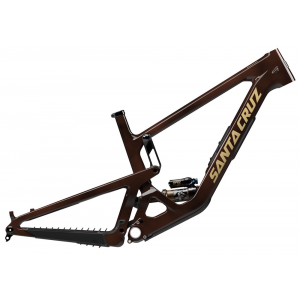
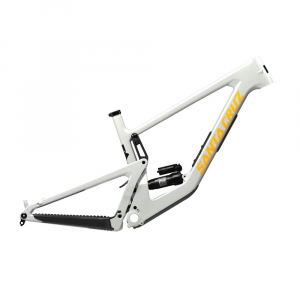
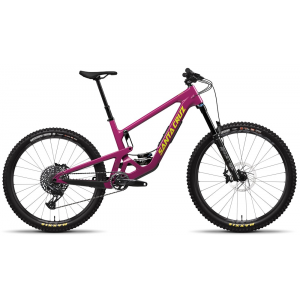
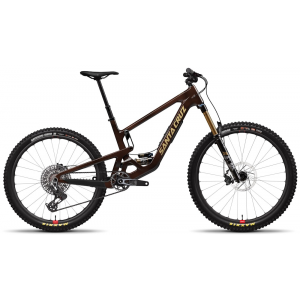
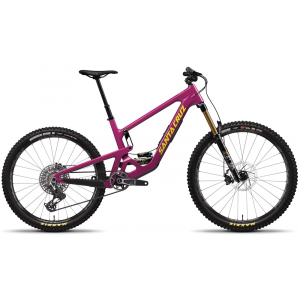
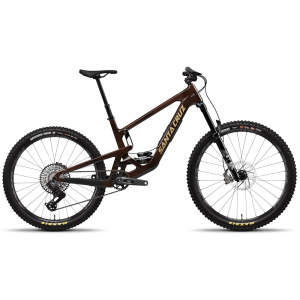

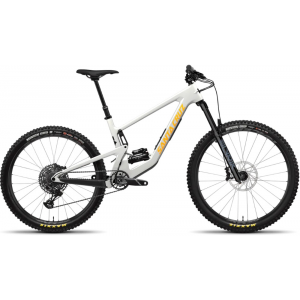
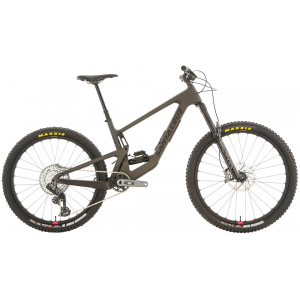












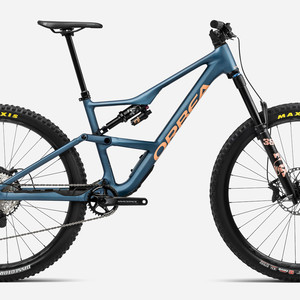
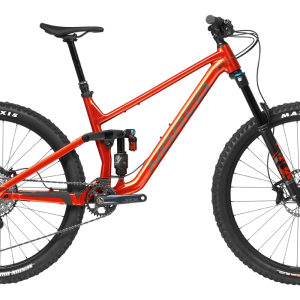
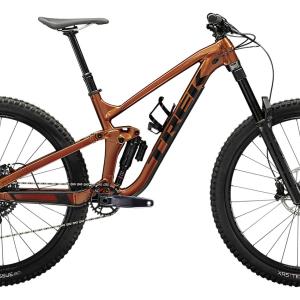







4 comments
Post a reply to: 2016 Test Sessions: Santa Cruz Bronson C S